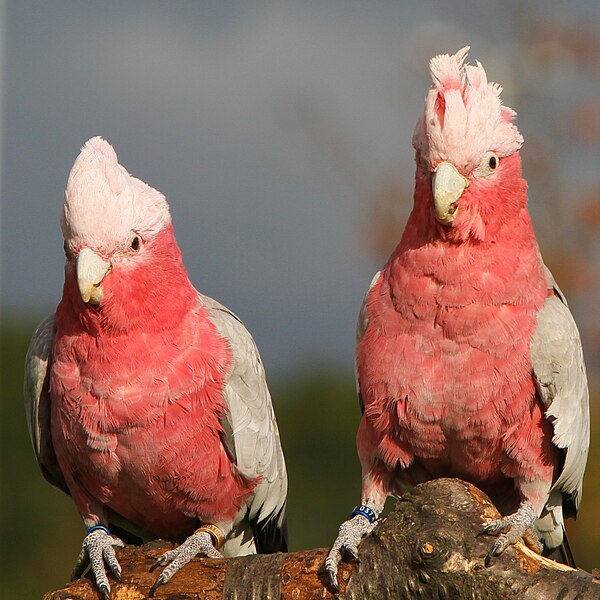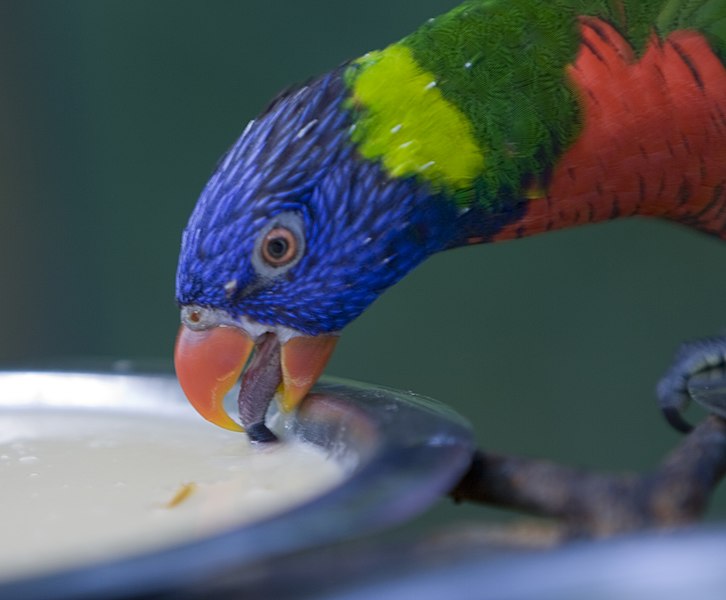 Difficulty in breathing is often a bird owner’s first clue that something is amiss. Wheezing, nasal discharge and other problems that seem related to breathing may in fact arise from any number of ailments. Read More »
Difficulty in breathing is often a bird owner’s first clue that something is amiss. Wheezing, nasal discharge and other problems that seem related to breathing may in fact arise from any number of ailments. Read More »
Tag Archives: caged bird health
Feed SubscriptionSalmonellosis – Salmonella or Paratyphoid Infection in Pet Birds
Pet reptiles have long been recognized as potential carriers of Salmonella. Less well known is the fact that almost any animal, including parrots, finches, doves and other cage birds, can also harbor and transmit this troublesome bacterium.
Salmonella Transmission
Pet birds most commonly contact Salmonella from food and water contaminated with the bacteria, but in crowded conditions may also inhale airborne organisms shed in nasal secretions or feather dander. In outdoor aviaries, wild birds (especially pigeons in urban environments) rats, and mice are the usual culprits in a Salmonella outbreak.
 When I first began working at the Bronx Zoo, I was baffled by continued flare-ups of Salmonellosis among birds which had been cleared of the disease and were housed in isolation. It was later discovered that roaches and flies, which are particularly difficult to control in zoo holding areas, can spread Salmonella in their droppings as they travel from cage to cage.
When I first began working at the Bronx Zoo, I was baffled by continued flare-ups of Salmonellosis among birds which had been cleared of the disease and were housed in isolation. It was later discovered that roaches and flies, which are particularly difficult to control in zoo holding areas, can spread Salmonella in their droppings as they travel from cage to cage.
Symptoms
Depending upon the species (over 2,000 have been identified) and concentration of the bacteria, infected birds may exhibit no symptoms at all, especially if otherwise in good health. However, birds with mild (termed “sub-clinical”) infections are able to pass Salmonella to other animals and people, and may themselves become very ill if their immune systems weaken due to stress or other health problems.
Typical symptoms of Salmonellosis include weight loss, lethargy, diarrhea and, in some cases, mucus discharge, dermatitis, excessive thirst and the passing of yellow-green feces. Lories and African Gray Parrots appear to be especially susceptible to attack by Salmonella.
The disease is diagnosed via fecal tests; identification of the exact species involved is important, as certain species or strains require specific antibiotics, and do not respond to standard treatments.
Salmonellosis in People
 Salmonellosis is particularly dangerous to infants and elderly or immune compromised individuals, but even healthy adults should take proper precautions when working around animals of any type (please see article referenced below).
Salmonellosis is particularly dangerous to infants and elderly or immune compromised individuals, but even healthy adults should take proper precautions when working around animals of any type (please see article referenced below).
The overwhelming majority of aviculturists have little to fear from Salmonella, as it is not common in pet species…as always, knowledge and sound husbandry is the best way to safeguard your health and that of your pets.
Further Reading
The American Veterinary Medical Association’s Salmonella prevention guidelines are posted here. They refer to reptiles, but are applicable to birds.
An interesting study on Salmonella in parrots and other birds is posted here.
Cockroach image referenced from wikipedia and originally posted by Wm Jas to FlickR
Lorikeet drinking image referenced from wikipedia and originally posted by Mats Lindh to FlickR
Avian Nutritional Considerations: Finches, Toucans and Other Birds
Today we’ll take a look at some of the finer points (as opposed to the basics) involved in feeding canaries, doves, budgerigars, toucans and related birds. Please see Part I and Part II of this article for information on African Gray and Amazon Parrots, Mynas and Macaws.
Finches
The perception of finches as “seed-eaters” is at the root of poor feeding practices in captivity. Wild finches eat a wide range of foods…in most habitats, plants produce seeds only at certain times, not year-round. Outside of these times, birds must rely upon sprouts, insects and other foods.
Depending upon the species, pet finches should be offered a variety of live and canned insects, fruit, sprouts, egg food, pellets and finely chopped greens (endive, kale, escarole, etc.) on a daily basis.
Canaries
The points mentioned above apply also to that most popular of all finches, the Canary.
Red factor canaries (those with red-tinged feathers) present a special challenge. Interestingly, these birds are not true canaries but rather hybrids that arose when aviculturists crossed canaries with a finch known as the Venezuelan Black-hooded Red Siskin. The amount of red they exhibit is, therefore, influenced by genetics. However, color-promoting foods will help in maintaining red plumage.
Budgerigars (Parakeets) and Cockatiels
These small parrots are prone to obesity and fatty liver disease when fed seed-only diets, especially if they select only a few favored types of seeds. Budgerigars in particular are extremely stubborn when it comes to accepting pellets.
You might try offering pellets in the morning, when the birds are very hungry, and withholding seed until late afternoon. Lafeber Nutri-berries combine pellets with seeds and other tasty foods, and are an excellent way of weaning all types of parrots onto a healthier diet. Groups of budgerigars are more likely to try pellets than are individual birds – like children, they seem spurred to see what they are missing if one individual samples a new food!
Pigeons and Doves
Much like finches, pigeons and doves are often fed seeds and little else in captivity. In actuality, however, most take a wide variety of foods in the wild. Depending  upon the species, pigeons and doves should be provided with pellets, whole wheat bread, chopped kale and other greens and fruit. Freeze dried fruits are very useful for those keeping fruit doves and tropical species such as the Bleeding Heart Pigeon.
upon the species, pigeons and doves should be provided with pellets, whole wheat bread, chopped kale and other greens and fruit. Freeze dried fruits are very useful for those keeping fruit doves and tropical species such as the Bleeding Heart Pigeon.
Pigeons and doves are prone to calcium deficiencies in captivity…calcium enriched grit or crumbled oyster and egg shell should always be available. Birds with chicks require additional protein…nearly all accept egg food and some will take live and canned insects as well.
Toucans and Toucanets
Dietary variety is the key to keeping these entertaining beauties in peak condition. Care must also be taken that they do not select only a few favored fruits from their daily salad.
In addition to a nutritious softbill pellet, toucans and related birds should be fed a wide variety of fresh and freeze dried fruits, chopped vegetables (i.e. carrots, swiss chard, kale,), live and canned insects and an occasional pink mouse.
Toucans and toucanets are prone to Hemochromatosis, or iron-storage disease. Please see the article referenced below for further information.
Further Reading
A diet high in citrus fruit may be problematical for some species. Please see my article Iron Storage Disease for more information.
 That Bird Blog – Bird Care and History for Pet Birds
That Bird Blog – Bird Care and History for Pet Birds
